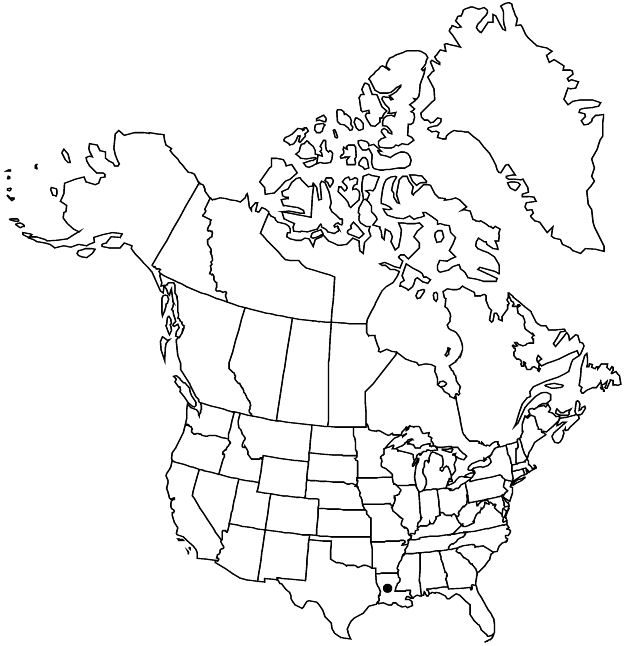Photinia glabra
Enum. Pl. Jap. 1: 141. 1873.
Plants 20–50 dm. Leaves persistent; petiole 10–30 mm, glabrous; blade elliptic to elliptic-obovate or elliptic-oblong, 5–9 × 2.5–5 cm, coriaceous, base cuneate, margins crenate-serrulate, lateral-veins 10–15 (–18) pairs, apex abruptly acuminate, surfaces glabrous. Inflorescences 4–10 cm diam. Pedicels without lenticels. Flowers 7–8 mm diam.; petals obovate, 2–3 mm, adaxially white-tomentose proximally.
Phenology: Flowering late Mar–Apr.
Habitat: Fencerows, thickets, disturbed sites
Elevation: 20–100 m
Distribution

Introduced; La., Asia (China), Asia (Japan), Asia (Myanmar), Asia (Thailand), Pacific Islands (New Zealand), Australia
Discussion
As noted by C. Kalkman (1973), Lindley cited Crataegus glabra as a synonym of his proposed new species Photinia serrulata. The concept of P. serrulata by Lindley was not the same as that of C. glabra by Thunberg, and P. serrulata Lindley has persisted as a name in use for P. serratifolia. In any case, the publication of P. serrulata was superfluous and illegitimate.
Photinia ×fraseri Dress, or 'red tip,' is a popular hybrid cultivar between P. glabra and P. serrulata, valued especially for its brilliant burgundy red young leaves, which mature to green over weeks through shades of copper red. Shrubs are 3–4(–4.5) m; leaf blades elliptic to oblong-obovate or elliptic-obovate, 7–12 × 3–4(–4.5) cm, basally cuneate, with petioles 1–1.5(–2.3) cm. The leaves are smaller than those of P. serratifolia but tend to be longer and slightly narrower, with sharper teeth, than those of P. glabra. Apparently, fruit set is very low and the plants have not been recorded as escaping cultivation. In Texas, P. ×fraseri produces an abundant flush of new leaves in late October through November, when neither of the parents is doing so.
Selected References
None.